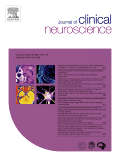
Kyphoplasty superior to vertebroplasty for osteoporotic vertebral compression fractures

Kyphoplasty superior to vertebroplasty for osteoporotic vertebral compression fractures
A meta-analysis of balloon kyphoplasty compared to percutaneous vertebroplasty for treating osteoporotic vertebral compression fractures
J Clin Neurosci. 2013 Jun;20(6):795-803. doi: 10.1016/j.jocn.2012.05.038. Epub 2013 Feb 18.Did you know you're eligible to earn 0.5 CME credits for reading this report? Click Here
Synopsis
10 trials (783 patients) were analyzed in this meta-analysis to compare the safety and efficacy between balloon kyphoplasty (KP) and percutaneous vertebroplasty (VP) in the treatment of osteoporotic vertebral compression fractures (OVCF). The meta-analysis found that balloon kyphoplasty had significantly better long term results (longer than 6 months) in terms of kyphosis angle, anterior height of the vertebral body, and cement leakage rates. No between-group differences were found in short and long term visual analog scale (VAS) pain and Oswestry-Disability Index scores, operative times, short term kyphosis angle, or adjacent-level fracture rates.
Were the search methods used to find evidence (original research) on the primary question or questions stated?
Was the search for evidence reasonably comprehensive?
Were the criteria used for deciding which studies to include in the overview reported?
Was the bias in the selection of studies avoided?
Were the criteria used for assessing the validity of the included studies reported?
Was the validity of all of the studies referred to in the text assessed with use of appropriate criteria (either in selecting the studies for inclusion or in analyzing the studies that were cited)?
Were the methods used to combine the findings of the relevant studies (to reach a conclusion) reported?
Were the findings of the relevant studies combined appropriately relative to the primary question that the overview addresses?
Were the conclusions made by the author or authors supported by the data and or analysis reported in the overview?
How would you rate the scientific quality of this evidence?
Yes = 1
Uncertain = 0.5
Not Relevant = 0
No = 0
The Reporting Criteria Assessment evaluates the transparency with which authors report the methodological and trial characteristics of the trial within the publication. The assessment is divided into five categories which are presented below.
4/4
Introduction
4/4
Accessing Data
4/4
Analysing Data
3/4
Results
3/4
Discussion
Detsky AS, Naylor CD, O'Rourke K, McGeer AJ, L'Abbé KA. J Clin Epidemiol. 1992;45:255-65
The Fragility Index is a tool that aids in the interpretation of significant findings, providing a measure of strength for a result. The Fragility Index represents the number of consecutive events that need to be added to a dichotomous outcome to make the finding no longer significant. A small number represents a weaker finding and a large number represents a stronger finding.
Why was this study needed now?
Worldwide, osteoporotic vertebral compression fractures (OVCF) have detrimental effects on patients. They are responsible for decrease in anterior vertebral height, spinal deformity, reduced pulmonary function, abdominal and thoracic content restriction, impaired mobility, and depression. Two surgical procedures, vertebroplasty (VP) and kyphoplasty (KP), have demonstrated better pain relief, vertebral restoration, and mobility than conservative treatments. A previous study stated that kyphoplasty, however, had higher costs than vertebroplasty. Hence, a meta-analysis was needed to compare both surgical procedures with each other.
What was the principal research question?
What is the safety and efficacy of balloon kyphoplasty (KP) compared to percutaneous vertebroplasty (VP) in treatment of osteoporotic vertebral compression fractures (OVCF)?
What were the important findings?
- In 7 trials, reporting short term VAS no difference was found between KP and VP (MD= -0.57, 95% CI= -1.33 to 0.20; p=0.15). Similar results were seen in long term VAS scores in 9 studies (MD = -0.99, 95% CI = -2.29 to 0.31; p=0.14).
- In 5 studies, covering ODI scores, 2 showed no differences between the groups in short term results (MD= -6.54, 95% CI = -14.57 to 1.48; p=0.11) and 5 had no differences in long term results (MD= -2.01, 95% CI -11.75 to 7.73; p = 0.69).
- 2 trials indicated no differences in operative times between KP and VP (MD = 4.47, 95% CI = -0.22 to 9.17; p=0.06).
- 3 studies found no differences in short term kyphosis angle after operation (MD= -2.25, 95% CI= -5.14 to 0.65; p=0.13). However, in 4 trials, the long term kyphosis angle was better with KP (MD=-2.64, 95% CI = -4.66 to -0.61; p=0.01).
- 4 trials reported better anterior height restoration of the vertebral body in KP (MD= 3.67, 95% CI =1.40 to 5.94; p =0.002).
- 9 studies also suggested a lower cement leakage rate in KP (RR=0.70, 95% CI =0.52 to 0.95; p=0.02).
- In 7 trials, no differences were seen between two procedures in adjacent vertebral compression fractures (RR=1.52, 95% CI = 0.76 to 3.03; p = 0.24).
What should I remember most?
The analyzed data suggested that kyphoplasty and vertebroplasty had similar operative time, pain relief, and functional scores in the treatment of osteoporotic vertebral compression fractures. However, kyphoplasty resulted in better long term kyphosis angle, restoration of vertebral body height, and lower risk of cement leakage.
How will this affect the care of my patients?
Although the study supports the use of kyphoplasty for better kyphosis angle, vertebral height restoration, and lower risk of cement leakages, the methodological quality and risk of bias of the studies was poor. Further trials still need to be conducted on this topic.
Learn about our AI Driven
High Impact Search Feature
Our AI driven High Impact metric calculates the impact an article will have by considering both the publishing journal and the content of the article itself. Built using the latest advances in natural language processing, OE High Impact predicts an article’s future number of citations better than impact factor alone.
Continue



 LOGIN
LOGIN

Join the Conversation
Please Login or Join to leave comments.
Orthopaedic Surgeon - Canada
autres essais